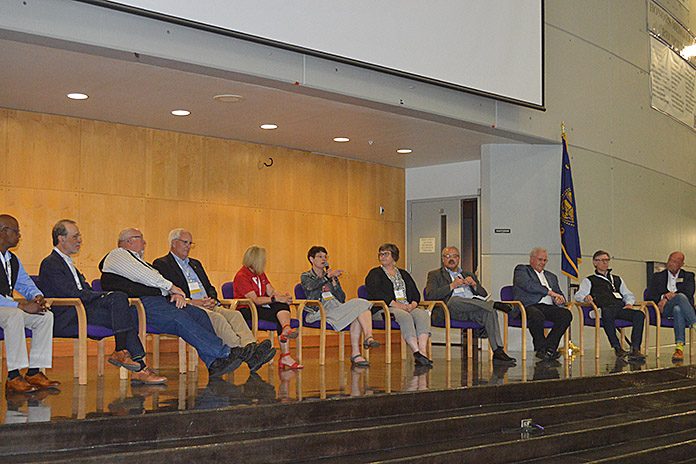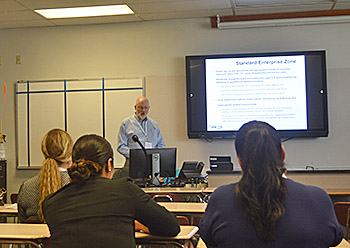
Industry experts, Oregon officials, office candidates and lawmakers from around the state converged onto Hermiston Thursday and Friday for the Eastern Oregon Economic Summit.
Hosted by the Eastern Oregon Women’s Coalition (EOWC), the two-day event gave private and public sector attendees insight into the region’s economy and how to tap into its potential.
Those attending on Friday heard from a Legislative panel as well as the candidates for governor. Thursday featured field tours covering the topics of housing, economic development, water and forest management.
Friday’s events were held at a packed Hermiston High School. It had been three years since the inaugural summit was held. The second summit – scheduled originally for June 2021, then re-scheduled for October 2021 – was postponed due to the pandemic.
“Just to be back to normal and socializing is a big thing,” said State Sen. Michael Dembrow (D-Portland), who was part of Friday’s Legislative panel.
“It was an honor to be a panelist,” said State Rep. Greg Smith (R-Heppner), who is serving in his 11 th term, making him the longest-serving member of the Oregon house. “This year’s event felt especially successful and I greatly appreciate the hard work and dedication of the Eastern Oregon Women’s Coalition.”
Along with Smith, the first part of the panel featured State Rep. Bobby Levy (R-Echo), who is also president of the EOWC; Sen. Bill Hansell (R-Athena); and Sen. Lynn Findley (R-Vale).
The bitter partisanship exhibited by federal lawmakers in D.C. was nowhere to be found on Friday. Each of the panelists were warm and congenial to one another – even when the Democrats joined the panel. In fact, all of them spoke about the need for bipartisanship and how little would get accomplished without it.
“The best legislators, in my view, are those who move to the middle,” said Smith. “There are common issues for all of us – schools, infrastructure. The best legislators are those who work with everyone.”
Levy said working with the other side is part of the job requirement.
“We have to work across the aisle,” she said. “There are some members with D’s behind their name that I’ve work with on several bills.”
State Sen. Elizabeth Steiner Hayward (D-Portland/Beaverton) said about 80 percent or more of the bills that pass the Legislature are unanimous.
“Only a few bills come out along party lines,” she said.
Each of the panelists talked about the value of a gathering like the summit that brings people from other parts of the state to Eastern Oregon.
Dembrow credits Levy for getting him and other west-side lawmakers to the east side. He said Levy asked him if there was a way for people from Portland to connect with Eastern Oregon.
“I thought why don’t we bring them out here and see Eastern Oregon up close,” he said. “That really made a difference.”
Hansell said lawmakers can disagree but should demonize the other side.
“I may view the other side as an opponent but never an enemy,” he said to applause from the audience.

Friday afternoon featured break-out sessions on a variety of topics such as housing, broadband, water and more.
Jill Miles and Art Fish of Business Oregon held a session on attracting business and industry to the region. Several factors go into whether or not a company wants to re-locate to a new area.
“Workforce is the No. 1 deciding factor for any business looking to locate,” said Miles. Another key factor is transportation. She noted many communities are focusing on transit issues and she highlighted the Confederated Tribes of the Umatilla Indian Reservation’s Kayak Public Transit program which provides transportation to area workers.
“The Umatilla tribe has a great transit system,” she said.
Other keys to a region recruiting new business are the availability of industrial land and livability issues.








